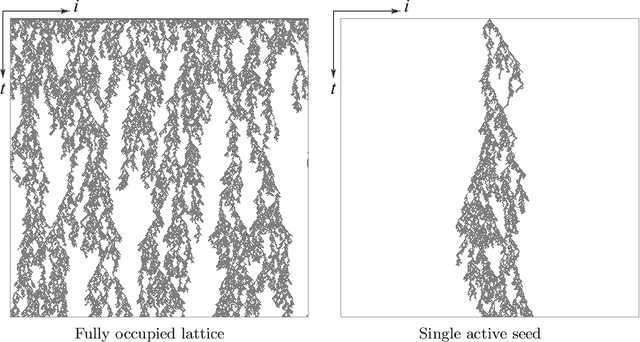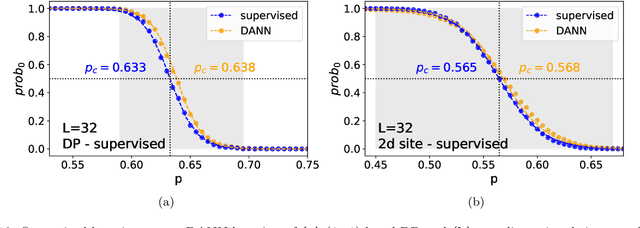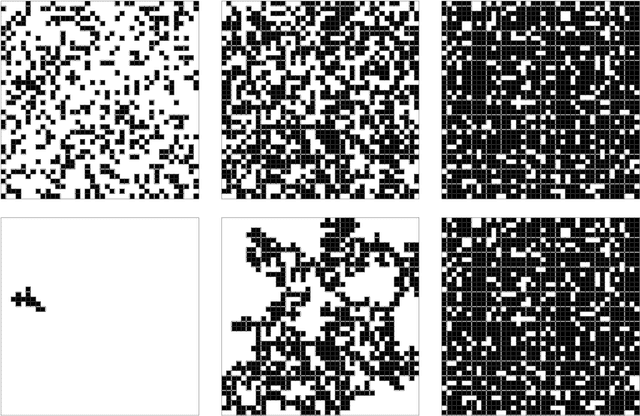Gabor Papp
Transfer learning of phase transitions in percolation and directed percolation
Jan 06, 2022



Abstract:The latest advances of statistical physics have shown remarkable performance of machine learning in identifying phase transitions. In this paper, we apply domain adversarial neural network (DANN) based on transfer learning to studying non-equilibrium and equilibrium phase transition models, which are percolation model and directed percolation (DP) model, respectively. With the DANN, only a small fraction of input configurations (2d images) needs to be labeled, which is automatically chosen, in order to capture the critical point. To learn the DP model, the method is refined by an iterative procedure in determining the critical point, which is a prerequisite for the data collapse in calculating the critical exponent $\nu_{\perp}$. We then apply the DANN to a two-dimensional site percolation with configurations filtered to include only the largest cluster which may contain the information related to the order parameter. The DANN learning of both models yields reliable results which are comparable to the ones from Monte Carlo simulations. Our study also shows that the DANN can achieve quite high accuracy at much lower cost, compared to the supervised learning.
Machine learning Hadron Spectral Functions in Lattice QCD
Dec 01, 2021



Abstract:Hadron spectral functions carry all the information of hadrons and are encoded in the Euclidean two-point correlation functions. The extraction of hadron spectral functions from the correlator is a typical ill-posed inverse problem and infinite number of solutions to this problem exists. We propose a novel neural network (sVAE) based on the Variation Auto-Encoder (VAE) and Bayesian theorem. Inspired by the maximum entropy method (MEM) we construct the loss function of the neural work such that it includes a Shannon-Jaynes entropy term and a likelihood term. The sVAE is then trained to provide the most probable spectral functions. For the training samples of spectral function we used general spectral functions produced from the Gaussian Mixture Model. After the training is done we performed the mock data tests with input spectral functions consisting 1) only a free continuum, 2) only a resonance peak, 3) a resonance peak plus a free continuum and 4) a NRQCD motivated spectral function. From the mock data test we find that the sVAE in most cases is comparable to the maximum entropy method in the quality of reconstructing spectral functions and even outperforms the MEM in the case where the spectral function has sharp peaks with insufficient number of data points in the correlator. By applying to temporal correlation functions of charmonium in the pseudoscalar channel obtained in the quenched lattice QCD at 0.75 $T_c$ on $128^3\times96$ lattices and $1.5$ $T_c$ on $128^3\times48$ lattices, we find that the resonance peak of $\eta_c$ extracted from both the sVAE and MEM has a substantial dependence on the number of points in the temporal direction ($N_\tau$) adopted in the lattice simulation and $N_\tau$ larger than 48 is needed to resolve the fate of $\eta_c$ at 1.5 $T_c$.
 Add to Chrome
Add to Chrome Add to Firefox
Add to Firefox Add to Edge
Add to Edge